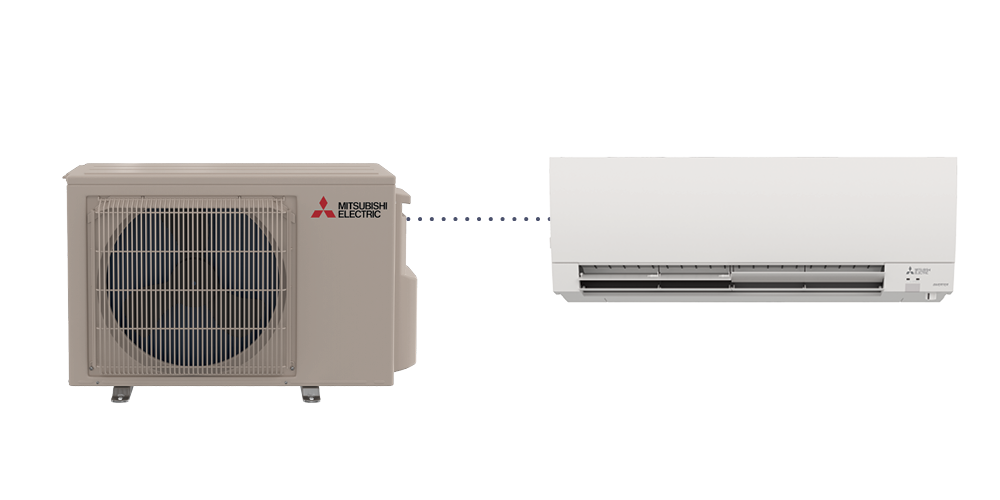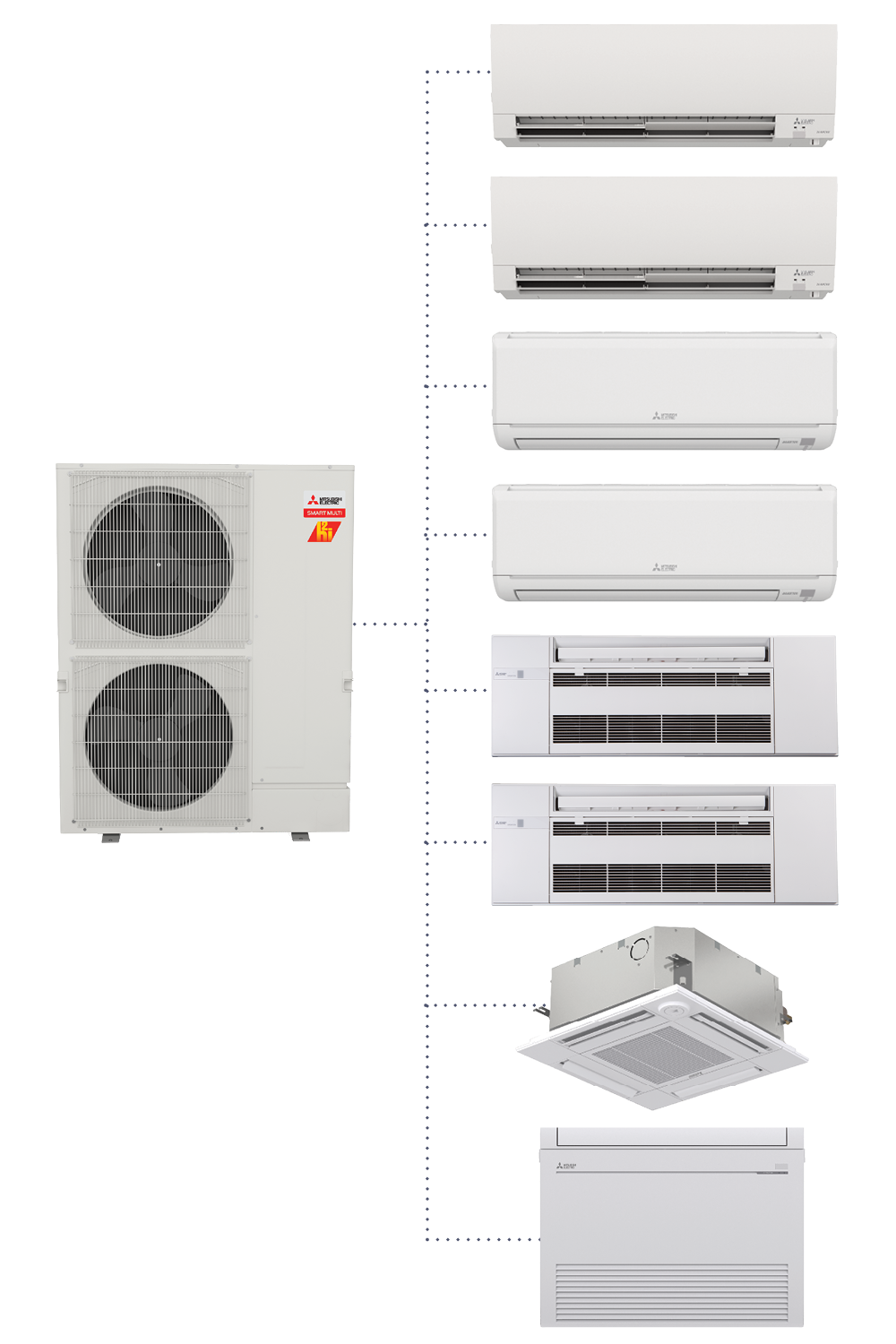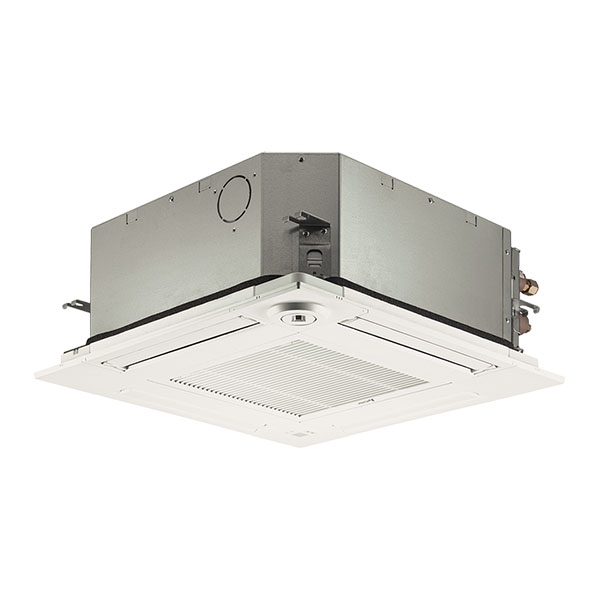Mini split air conditioners have revolutionized the way we cool our homes and commercial spaces. They offer unparalleled efficiency, flexibility, and comfort. In this comprehensive guide, we’ll delve into what mini splits are, how they work, popular brands in the US, cost considerations, their benefits compared to traditional HVAC systems, and why they are an ideal choice for your cooling needs.
A mini split, also known as a ductless mini split air conditioner or heat pump, is a type of heating, ventilation, and air conditioning (HVAC) system that provides both cooling and heating to indoor spaces without the need for ductwork. It consists of two main components: an outdoor compressor or condenser unit and one or more indoor air-handling units.
Unlike traditional HVAC systems that use ducts to distribute conditioned air throughout a building, mini splits operate by transferring refrigerant between the outdoor and indoor units through a set of refrigeration lines. These systems are highly versatile and can be used in various settings, including homes, apartments, offices, commercial spaces, and even in specific areas like room additions or renovations where extending existing ductwork is impractical.
Types of Mini Split Systems
Your Mini split systems come in various types, offering flexibility and catering to different requirements for heating and cooling. Here are the primary types of mini split systems:Goes Here
Single-Zone Mini Splits:
This type consists of one outdoor unit connected to a single indoor unit. It’s suitable for providing climate control to a specific room or area within a building.
Ideal for individual rooms, such as bedrooms, home offices, or small living spaces, where targeted heating or cooling is needed.


Multi-Zone Mini Splits:
Multi-zone systems feature a single outdoor unit that connects to multiple indoor units, allowing for independent temperature control in various zones or rooms.
Suited for larger residential spaces or commercial buildings where different areas require separate heating and cooling settings.
Provides flexibility in controlling temperatures in different zones simultaneously.
- Individual Zone Control
- Energy Saving Modes
- Scalability
- Improved Air Quality
- Energy Efficiency
Ceiling Cassette Mini Splits:
These systems have indoor units that are mounted within the ceiling, offering a discreet and space-saving solution.
Ceiling cassette units distribute air evenly throughout the room and are often used in commercial settings like offices, conference rooms, or retail spaces.


Floor-Mounted Mini Splits:
Floor-mounted units are installed near the floor level, making them suitable for spaces where wall or ceiling installations may not be feasible.
Ideal for rooms with limited wall space or where specific aesthetic preferences dictate alternative mounting options.
Concealed Duct Mini Splits:
Also known as ducted mini splits, these systems have indoor units installed in a ceiling or concealed space and use ductwork to distribute conditioned air.
Provide a more centralized cooling and heating solution while maintaining a sleek appearance by hiding the units from plain view.
Suitable for larger areas or when a more uniform distribution of air is desired without visible indoor units

Mechanics Behind Mini Split Air Conditioners
Refrigerant Cycle
Mini splits utilize a closed-loop refrigeration cycle that circulates refrigerant between the outdoor condenser/compressor unit and the indoor air-handling unit(s).
The refrigerant, a chemical substance with excellent heat transfer properties, plays a crucial role in absorbing and releasing heat to facilitate cooling or heating.
Absorption and Release of Heat
Cooling Mode: In cooling mode, the refrigerant absorbs heat from indoor air as it passes over the indoor evaporator coil. This heat absorption causes the refrigerant to evaporate, changing from a liquid to a gas.
Heating Mode: In heating mode (for heat pump systems), the process reverses. The outdoor unit’s compressor pressurizes the refrigerant gas, causing it to release heat indoors as it condenses back into a liquid.
Role of Indoor and Outdoor Units
Outdoor Unit: Houses the compressor, condenser coil, and expansion valve. The compressor increases the pressure and temperature of the refrigerant gas, while the condenser coil helps dissipate heat to the outside environment.
Indoor Unit: Contains the evaporator coil, blower fan, and air filter. The indoor fan blows air over the evaporator coil, where the refrigerant absorbs or releases heat, depending on the operating mode (cooling or heating).
Cycling and Regulation of Refrigerant
The expansion valve controls the flow of refrigerant, regulating its pressure and temperature to ensure efficient heat transfer.
As the refrigerant cycles between the indoor and outdoor units, it continuously absorbs heat from indoors (for cooling) or releases heat indoors (for heating), maintaining the desired indoor temperature.
Inverter Technology (Optional)
Many modern mini splits use inverter-driven compressors that adjust their speed based on the cooling or heating demand. This technology allows for more precise temperature control and increased energy efficiency by avoiding frequent cycling on and off.
How Do Mini Splits Work?
Mini splits work by utilizing a refrigeration cycle to transfer heat between the indoor and outdoor units, providing both cooling and heating capabilities without the need for ductwork. Here’s a detailed explanation of how mini splits work:
Heat Absorption and Release
Cooling Mode: During cooling, the indoor unit’s evaporator coil absorbs heat from indoor air, and the refrigerant circulating within the coil absorbs this heat, causing it to evaporate and change from a liquid to a gas.
Heating Mode: In heating mode (applicable to heat pump systems), the process reverses. The outdoor unit’s compressor pressurizes the refrigerant gas, causing it to release heat as it condenses back into a liquid within the indoor unit’s coil.
Components and Functions of Mini Split AC
Outdoor Unit : Contains the compressor, condenser coil, expansion valve, and fan. The compressor increases the pressure and temperature of the refrigerant gas. The condenser coil releases heat from the refrigerant to the outside air, causing the gas to condense into a liquid.
Indoor Unit: Houses the evaporator coil, blower fan, air filter, and sometimes additional features like heating elements. The indoor fan blows air over the evaporator coil, where heat exchange with the refrigerant occurs, cooling or heating the air before distributing it into the room.
Refrigerant Flow and Regulation
The refrigerant circulates between the indoor and outdoor units through insulated copper tubing or lines. As it cycles, it continuously absorbs heat from the indoor space (for cooling) or releases heat into the room (for heating), depending on the operating mode.
An expansion valve within the indoor unit controls the flow of the refrigerant, regulating its pressure and temperature to ensure efficient heat transfer.
Zoning and Control
Mini splits offer zoning capabilities, allowing for individual temperature control in different areas or rooms. Each indoor unit operates independently, enabling personalized comfort settings for various zones within a building.
Advanced mini splits may feature programmable thermostats or remote control options, providing users with the ability to adjust temperatures and settings for each indoor unit as needed.
Energy Efficiency and Inverter Technology (Optional)
Many modern mini splits utilize inverter-driven compressors. These compressors adjust their speed based on the cooling or heating demand, optimizing energy usage by operating at varying speeds rather than cycling on and off.
Top Mini Split Brands in the US
In the United States, several reputable brands offer high-quality mini split systems, each known for its technological advancements, energy efficiency, reliability, and diverse product offerings. Here are some of the top mini split brands highly regarded by consumers and HVAC professionals:
Mitsubishi Electric:
Renowned for its innovative technology and high-performance mini split systems.
Mitsubishi Electric offers a wide range of ductless solutions known for their energy efficiency, quiet operation, and advanced features.
Their systems often incorporate cutting-edge technology for optimal comfort and climate control.
Daikin:
Daikin is recognized for its reliable and efficient mini split systems, catering to both residential and commercial applications.
Known for providing a variety of models with superior energy efficiency ratings and advanced features for enhanced comfort.
Daikin offers a diverse lineup, including single-zone and multi-zone systems, meeting various customer needs.
Fujitsu General:
Fujitsu General is praised for its quiet operation, energy-saving capabilities, and reliable performance in mini split systems.
Their units are often equipped with features like human sensor technology, providing personalized comfort while maximizing energy efficiency.
Fujitsu General offers a range of models suitable for different room sizes and applications.
LG:
LG manufactures innovative mini split systems known for their advanced technology and smart features.
These systems often boast high energy efficiency ratings, quiet operation, and user-friendly controls, including Wi-Fi connectivity for remote access.
LG offers a variety of models, including ductless and ducted options, to accommodate diverse customer preferences.
GREE:
GREE provides cost-effective mini split systems without compromising quality, making them an attractive choice for budget-conscious consumers.
Their units offer reliable performance, decent energy efficiency, and competitive pricing, appealing to those seeking affordable yet efficient cooling and heating solutions.
Panasonic:
Panasonic offers mini split systems known for their reliability, energy efficiency, and technological advancements.
Their units often incorporate eco-friendly refrigerants and innovative features for improved comfort and performance.
Cost Considerations
On average, the cost of mini split systems in the US can range from:
Single-zone systems: Approximately $1,500 to $4,000 for equipment and installation.
Multi-zone systems: Prices may start from $3,000 and go upwards, depending on the number of indoor units and complexity of installation.
When considering the cost of mini split systems in the United States, several factors contribute to the overall price. These factors include the brand, type of system, installation requirements, capacity, efficiency ratings, additional features, and professional labor costs. Here are some cost considerations for mini split systems:
System Type and Brand:
Different types of mini split systems, such as single-zone or multi-zone setups, come with varying price ranges. Additionally, certain reputable brands might offer higher-end models with advanced features at a premium price compared to budget-friendly options.
Capacity and Efficiency:
The cooling and heating capacity of a mini split system, measured in British Thermal Units (BTUs), affects the price. Higher capacities for larger areas or multi-zone systems may cost more.
Energy efficiency ratings (SEER – Seasonal Energy Efficiency Ratio for cooling, HSPF – Heating Seasonal Performance Factor for heating) influence initial costs but can result in long-term savings on energy bills.
Additional Features:
Advanced features like Wi-Fi connectivity, smart thermostats, air purifiers, humidity control, and zone control capabilities may increase the initial cost of the system.
Installation Requirements:
Professional installation is crucial for mini split systems. Factors such as ease of installation, accessibility, and complexity of the setup impact installation costs.
The need for additional electrical work, refrigerant lines, mounting hardware, or modifications to accommodate the system affects the overall installation expenses.
Labor Costs:
Hiring a licensed HVAC professional for installation ensures proper setup and performance of the mini split system. Labor costs may vary based on the complexity of the installation and local labor rates.
Maintenance and Long-Term Costs:
Consider long-term costs, including maintenance expenses, filter replacements, and potential repair costs beyond the warranty period. Opting for higher-quality systems from reputable brands might result in fewer maintenance issues.
Advantages of Mini Split AC Over Traditional HVAC Systems
Energy Efficiency and Cost-Effectiveness
Mini splits are highly energy-efficient due to their zoning capabilities, allowing users to cool or heat specific areas, reducing energy waste. Additionally, their inverter-driven compressors adjust speed based on demand, saving energy and lowering utility bills.
Customizable Temperature Control and Zoning
Compared to traditional HVAC systems, mini splits offer precise temperature control for individual zones, providing personalized comfort. They eliminate the need for ductwork, reducing the loss of conditioned air and enhancing efficiency.
Conclusion
Mini split air conditioners have transformed the cooling landscape by providing unmatched efficiency, flexibility, and comfort. Brands like Mitsubishi Electric, Daikin, Fujitsu General, LG, and GREE offer a range of options to suit various needs and budgets. Considering their energy efficiency, zoning capabilities, and technological advancements, mini splits stand out as a superior choice for cooling solutions in the US.
Whether you’re looking to upgrade your current cooling system or seeking a more efficient alternative, mini splits could be the answer to your HVAC needs. Their benefits, coupled with the advancements offered by reputable brands, make them a compelling choice for anyone seeking efficient and personalized cooling solutions.





Leave A Comment